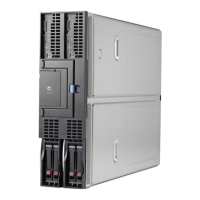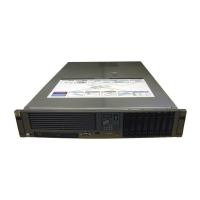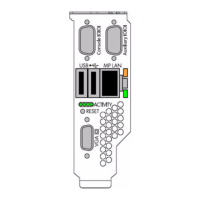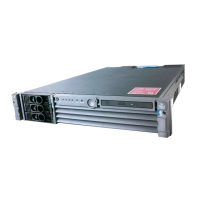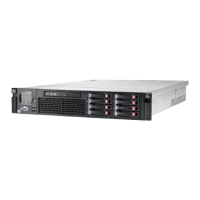The SAS backplane architecture also includes a SAS cable to connect the SAS backplane to the
system board, and a USB port on the SAS backplane. The USB port is available to use as:
• HP Ignite-UX boot-strap
• Hosting a flash boot image
• Multifactor authentication device for added security
• Typical USB storage medium (for drivers, licenses, etc.)
NOTE: The specific USB port usage depends on the operating system and application support.
For more information on HP Ignite-UX, see “Installing the Operating System Using HP Ignite-UX”
(page 70), or the HP website at: http://www.hp.com/go/sw-deployment-docs.
I/O Subsystem
The I/O subsystem includes embedded I/Oand up to three mezzanine cards. The I/O subsystem
supports one Type I and two Type II mezzanine cards (with zx2 PCI express I/O adapter chips)
that serves as a bridge between the zx2 rope links and PCIe). The server blade does not support
PCI Hot Plug. The zx1 I/O adapters are used as the ropes to the PCI(-x) bridge for the system
board core I/O. Two I/O adapters are used for PCI 66 MHz and PCI-X 133 MHz interfaces to
the fast core I/O LAN and SAS. The slow core I/O PCI bus on Rope 0 runs at 33 MHz and is
used to interface with the manageability, USB, and graphics. These functions can be accessed
through the serial, USB, and video (SUV) cable.
PCIe MPS Optimization
For PCIe-based systems, each PCIe device has a configurable maximum payload size (MPS)
parameter. Larger MPS values can enable the optimization to gain higher performance. MPS
Optimization is supported on PCIe systems running HP-UX, Open VMS, and Linux. System firmware
level greater than 01.01 performs an optimization during boot time to set the MPS value to the
largest size supported by both a PCIe root port and the devices below it.
The default server state is optimization disabled. When disabled system firmware sets MPS to the
minimum value on each PCIe device.
The info io command displays the current PCIe MPS optimization setting. See Table 29
(page 148).
To enable PCIe MPS optimization use the ioconfig mps_optimize command. See the“ioconfig”
(page 160) command.
For non-PCIe systems, ioconfig and info io do not display the MPS optimization policy
setting. The Set PCIe MPS Optimization boot manager menu also does not display the policy
setting. If you run the ioconfig mps_optimize [on|off] command from a non-PCIe system,
the following output displays:
-------------
Shell> ioconfig mps_optimize
ioconfig: PCIe MPS optimization is not supported.
Shell> ioconfig mps_optimize on
ioconfig: PCIe MPS optimization is not supported.
Exit status code: Unsupported
Shell>
-----------------
To restore MPS to the default values, use the default clear command.
Server Blade Components 17
